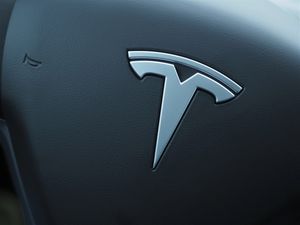
The relentless march of semiconductor technology has pushed far beyond the 7-nanometer (nm) threshold, ushering in an era of unprecedented computational power and efficiency that is fundamentally reshaping the landscape of Artificial Intelligence (AI). As of late 2025, the industry is witnessing a critical inflection point, with 5nm and 3nm nodes in widespread production, 2nm on the cusp of mass deployment, and roadmaps extending to 1.4nm. These advancements are not merely incremental; they represent a paradigm shift in how AI models, particularly large language models (LLMs), are developed, trained, and deployed, promising to unlock capabilities previously thought to be years away. The immediate significance lies in the ability to process vast datasets with greater speed and significantly reduced energy consumption, addressing the growing demands and environmental footprint of the AI supercycle.
The Nanoscale Frontier: Technical Leaps Redefining AI Hardware
The current wave of semiconductor innovation is characterized by a dramatic increase in transistor density and the adoption of novel transistor architectures. The 5nm node, in high-volume production since 2020, delivered a substantial boost in transistor count and performance over 7nm, becoming the bedrock for many current-generation AI accelerators. Building on this, the 3nm node, which entered high-volume production in 2022, offers a further 1.6x logic transistor density increase and 25-30% lower power consumption compared to 5nm. Notably, Samsung (KRX: 005930) introduced its 3nm Gate-All-Around (GAA) technology early, showcasing significant power efficiency gains.
The most profound technical leap comes with the 2nm process node, where the industry is largely transitioning from the traditional FinFET architecture to Gate-All-Around (GAA) nanosheet transistors. GAAFETs provide superior electrostatic control over the transistor channel, dramatically reducing current leakage and improving drive current, which translates directly into enhanced performance and critical energy efficiency for AI workloads. TSMC (NYSE: TSM) is poised for mass production of its 2nm chips (N2) in the second half of 2025, while Intel (NASDAQ: INTC) is aggressively pursuing its Intel 18A (equivalent to 1.8nm) with its RibbonFET GAA architecture, aiming for leadership in 2025. These advancements also include the emergence of Backside Power Delivery Networks (BSPDN), further optimizing power efficiency. Initial reactions from the AI research community and industry experts highlight excitement over the potential for training even larger and more sophisticated LLMs, enabling more complex multi-modal AI, and pushing AI capabilities further into edge devices. The ability to pack more specialized AI accelerators and integrate next-generation High-Bandwidth Memory (HBM) like HBM4, offering roughly twice the bandwidth of HBM3, is seen as crucial for overcoming the "memory wall" that has bottlenecked AI hardware performance.
Reshaping the AI Competitive Landscape
These advanced semiconductor technologies are profoundly impacting the competitive dynamics among AI companies, tech giants, and startups. Foundries like TSMC (NYSE: TSM), which holds a commanding 92% market share in advanced AI chip manufacturing, and Samsung Foundry (KRX: 005930), are pivotal, providing the fundamental hardware for virtually all major AI players. Chip designers like NVIDIA (NASDAQ: NVDA) and AMD (NASDAQ: AMD) are direct beneficiaries, leveraging these smaller nodes and advanced packaging to create increasingly powerful GPUs and AI accelerators that dominate the market for AI training and inference. Intel, through its Intel Foundry Services (IFS), aims to regain process leadership with its 20A and 18A nodes, attracting significant interest from companies like Microsoft (NASDAQ: MSFT) for its custom AI chips.
The competitive implications are immense. Companies that can secure access to these bleeding-edge fabrication processes will gain a significant strategic advantage, enabling them to offer superior performance-per-watt for AI workloads. This could disrupt existing product lines by making older hardware less competitive for demanding AI tasks. Tech giants such as Google (NASDAQ: GOOGL), Microsoft, and Meta Platforms (NASDAQ: META), which are heavily investing in custom AI silicon (like Google's TPUs), stand to benefit immensely, allowing them to optimize their AI infrastructure and reduce operational costs. Startups focused on specialized AI hardware or novel AI architectures will also find new avenues for innovation, provided they can navigate the high costs and complexities of advanced chip design. The "AI supercycle" is fueling unprecedented investment, intensifying competition among the leading foundries and memory manufacturers like SK Hynix (KRX: 000660) and Micron (NASDAQ: MU), particularly in the HBM space, as they vie to supply the critical components for the next generation of AI.
Wider Implications for the AI Ecosystem
The move beyond 7nm fits squarely into the broader AI landscape as a foundational enabler of the current and future AI boom. It addresses one of the most pressing challenges in AI: the insatiable demand for computational resources and energy. By providing more powerful and energy-efficient chips, these advancements allow for the training of larger, more complex AI models, including LLMs with trillions of parameters, which are at the heart of many recent AI breakthroughs. This directly impacts areas like natural language processing, computer vision, drug discovery, and autonomous systems.
The impacts extend beyond raw performance. Enhanced power efficiency is crucial for mitigating the "energy crisis" faced by AI data centers, reducing operational costs, and making AI more sustainable. It also significantly boosts the capabilities of edge AI, enabling sophisticated AI processing on devices with limited power budgets, such as smartphones, IoT devices, and autonomous vehicles. This reduces reliance on cloud computing, improves latency, and enhances privacy. However, potential concerns exist. The astronomical cost of developing and manufacturing these advanced nodes, coupled with the immense capital expenditure required for foundries, could lead to a centralization of AI power among a few well-resourced tech giants and nations. The complexity of these processes also introduces challenges in yield and supply chain stability, as seen with ongoing geopolitical considerations driving efforts to strengthen domestic semiconductor manufacturing. These advancements are comparable to past AI milestones where hardware breakthroughs (like the advent of powerful GPUs for parallel processing) unlocked new eras of AI development, suggesting a similar transformative period ahead.
The Road Ahead: Anticipating Future AI Horizons
Looking ahead, the semiconductor roadmap extends even further into the nanoscale, promising continued advancements. TSMC (NYSE: TSM) has A16 (1.6nm-class) and A14 (1.4nm) on its roadmap, with A16 expected for production in late 2026 and A14 around 2028, leveraging next-generation High-NA EUV lithography. Samsung (KRX: 005930) plans mass production of its 1.4nm (SF1.4) chips by 2027, and Intel (NASDAQ: INTC) has Intel 14A slated for risk production in late 2026. These future nodes will further push the boundaries of transistor density and efficiency, enabling even more sophisticated AI models.
Expected near-term developments include the widespread adoption of 2nm chips in flagship consumer electronics and enterprise AI accelerators, alongside the full commercialization of HBM4 memory, dramatically increasing memory bandwidth for AI. Long-term, we can anticipate the proliferation of heterogeneous integration and chiplet architectures, where specialized processing units and memory are seamlessly integrated within a single package, optimizing for specific AI workloads. Potential applications are vast, ranging from truly intelligent personal assistants and advanced robotics to hyper-personalized medicine and real-time climate modeling. Challenges that need to be addressed include the escalating costs of R&D and manufacturing, the increasing complexity of chip design (where AI itself is becoming a critical design tool), and the need for new materials and packaging innovations to continue scaling. Experts predict a future where AI hardware is not just faster, but also far more specialized and integrated, leading to an explosion of AI applications across every industry.
A New Era of AI Defined by Silicon Prowess
In summary, the rapid progression of semiconductor technology beyond 7nm, characterized by the widespread adoption of GAA transistors, advanced packaging techniques like 2.5D and 3D integration, and next-generation High-Bandwidth Memory (HBM4), marks a pivotal moment in the history of Artificial Intelligence. These innovations are creating the fundamental hardware bedrock for an unprecedented ascent of AI capabilities, enabling faster, more powerful, and significantly more energy-efficient AI systems. The ability to pack more transistors, reduce power consumption, and enhance data transfer speeds directly influences the capabilities and widespread deployment of machine learning and large language models.
This development's significance in AI history cannot be overstated; it is as transformative as the advent of GPUs for deep learning. It's not just about making existing AI faster, but about enabling entirely new forms of AI that require immense computational resources. The long-term impact will be a pervasive integration of advanced AI into every facet of technology and society, from cloud data centers to edge devices. In the coming weeks and months, watch for announcements from major chip designers regarding new product lines leveraging 2nm technology, further details on HBM4 adoption, and strategic partnerships between foundries and AI companies. The race to the nanoscale continues, and with it, the acceleration of the AI revolution.
This content is intended for informational purposes only and represents analysis of current AI developments.
TokenRing AI delivers enterprise-grade solutions for multi-agent AI workflow orchestration, AI-powered development tools, and seamless remote collaboration platforms.
For more information, visit https://www.tokenring.ai/.






